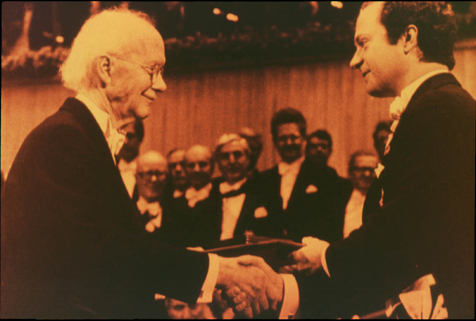
Faculty Research 1980 - 1989
Biosynthesis and glycosylation of the epidermal growth factor receptor in human tumor-derived cell lines A431 and Hep 3B.
Document Type
Article
Publication Date
1986
Keywords
Cell-Line, Glycoproteins: bi, ge, Hepatoma, Human, Liver-Neoplasms, Protein-Processing-Post-Translational, Receptors-Epidermal-Growth-Factor-Urogastrone: bi, SUPPORT-U-S-GOVT-P-H-S, Tunicamycin
First Page
257
Last Page
264
JAX Source
Mol Cell Biol 1986 Jan;6(1):257-64
Grant
CA18470, CA10815
Abstract
Biosynthesis of the receptor for epidermal growth factor was investigated in two human tumor-derived cell lines, Hep 3B and A431. When grown in the presence of tunicamycin, both cells expressed a receptor-related species p135, the presumptive aglycosylated form of the biosynthetic precursor, gp145, of the mature form of the receptor, gp165, expressed at the cell surface. Two additional receptor-related species, p115 and p70, were detected when A431, but not Hep 3B, cells were treated with tunicamycin. Furthermore, digestion of the A431 receptor-related proteins with endoglycosidase F resulted in the detection of these three aglycosylated species. P70 appears to be the aglycosylated form of gp95, the presumptive intracellular precursor of the receptor-related species gp120 that is secreted by A431 but not Hep 3B cells; gp120 has a complex pattern of N-linked glycosylation, with consequent molecular weight and charge heterogeneity. P115 may be the aglycosylated form of a third biosynthetic intermediate, possibly a gp135 species detected in the early time points of pulse-chase labeling. Alternatively, p115 and gp135 may be derived co- or post-translationally by Ca2+-mediated proteolysis from p135 and gp145, respectively. The implications of the complexity of the biosynthesis of this molecule with regard to the multiple opportunities it affords the cell to modulate cell proliferation are discussed.
Recommended Citation
Carlin CR,
Knowles BB.
Biosynthesis and glycosylation of the epidermal growth factor receptor in human tumor-derived cell lines A431 and Hep 3B. Mol Cell Biol 1986 Jan;6(1):257-64

